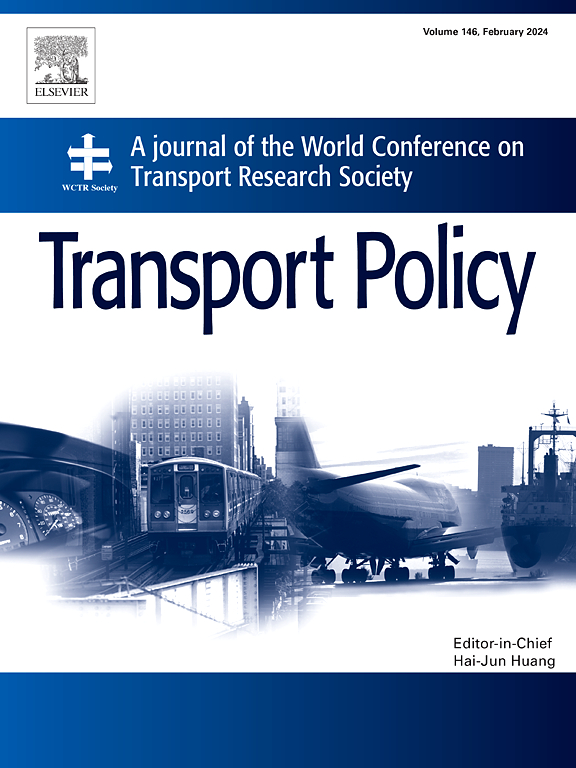迁移到哪里?高铁在中国农民工就业区位决策中的作用
IF 6.3
2区 工程技术
Q1 ECONOMICS
引用次数: 0
摘要
了解高铁对农民工就业区位决策的影响,对于优化劳动力空间配置具有重要意义。现有的研究大多使用农民工的汇总数据,忽略了个体行为决策的差异。为了填补这一空白,本研究旨在利用中国流动人口动态调查(CMDS)的数据深入研究高铁对中国流动人口城际就业区位选择的影响。本文建立了一个结合收入增长、失业率、信息约束和干预成本的理论模型,研究高铁对农民工决策的影响,并辅以使用条件logit模型的实证分析,研究个体异质性。基于2011-2017年期间89801名农民工的样本,研究结果表明,高铁显著增加了城市对农民工的吸引力,高铁可达性比高铁连通性产生更深远的影响。女性、年轻(16岁至29岁)、未婚、没有孩子、在第二产业或外企工作、没有城市户口或跨省的流动人口对高铁的连通性和可达性表现出高度的敏感性。此外,农民工对高铁运营的支付意愿最高,其次是可达性的改善,然后是连通性的增强。通过考虑这些不同的因素,我们的研究更细致地了解了高铁如何影响中国农民工的就业地点选择,强调了可达性和连通性在决定劳动力迁移中的重要性。本文章由计算机程序翻译,如有差异,请以英文原文为准。
Where to migrate? The role of high-speed rail in migrant workers’ employment location decision in China
Understanding the influence of High-Speed Rail (HSR) on employment location decision of migrant workers is critical for optimizing the spatial allocation of labor force. Existing research mostly uses aggregate data of migrant workers, which disregards individual behavioral decision-making variations. To fill this gap, this study aims to delve into the impact of HSR on migrant workers' intercity employment location choice in China using data from the China Migrant Dynamics Survey (CMDS). This paper develops a theoretical model that combines income growth, unemployment rates, information constraints and intervening costs to investigate how HSR impacts migrant workers' decision, complemented by an empirical analysis using a conditional logit model and investigating individual heterogeneity. Relying on a sample of 89,801 migrant workers over the period 2011–2017, the results indicate that HSR significantly increases a city's allure for migrant workers, with HSR accessibility exerting a more profound influence compared to HSR connectivity. Migrants who are female, young (aged 16 to 29), unmarried, having no kids, working in secondary industry or foreign enterprises, with non-urban hukou or crossing provinces demonstrate a heightened sensitivity to both HSR connectivity and accessibility. Furthermore, the willingness to pay of migrant labor is highest for the operation of HSR, followed by improvements in accessibility, and then by enhancements in connectivity. By considering these diverse factors, our study provides a more nuanced understanding of how HSR shapes employment location choices for migrant workers in China, highlighting the significance of accessibility and connectivity in determining the labor migration.
求助全文
通过发布文献求助,成功后即可免费获取论文全文。
去求助
来源期刊

Transport Policy
Multiple-
CiteScore
12.10
自引率
10.30%
发文量
282
期刊介绍:
Transport Policy is an international journal aimed at bridging the gap between theory and practice in transport. Its subject areas reflect the concerns of policymakers in government, industry, voluntary organisations and the public at large, providing independent, original and rigorous analysis to understand how policy decisions have been taken, monitor their effects, and suggest how they may be improved. The journal treats the transport sector comprehensively, and in the context of other sectors including energy, housing, industry and planning. All modes are covered: land, sea and air; road and rail; public and private; motorised and non-motorised; passenger and freight.
 求助内容:
求助内容: 应助结果提醒方式:
应助结果提醒方式:


